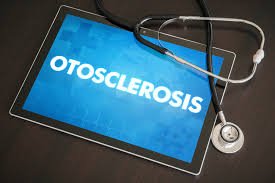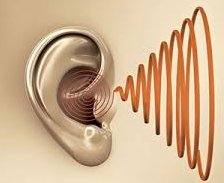- Primary disease of bony labyrinth.
- In this disease spongy bone replaces part of dense enchondral layer of bony otic capsule.
- Most commonly involves stapes (ear bone) and causes its fixation.
- Exact etiology not known, but commonly having positive family history in 50% patient
- More commonly occurs in female than males, mode of transmission autosomal dominant.
- Age of onset 30 year onwards.
- The disease is associated with other congenital anomalies like osteogenesis imperfecta. • There are three types of otosclerosis:- ○ Stapedial-most common. ○ Cochlear ○ Histologic
- SYMPTOMS:- • Decreased hearing. • Otosclerotic person hearing better in noisy than quieter surrounding, Tinnitus • Vertigo • Monotonous, well modulated soft speech • Carhartz notch:- In pure tone audiogram bone conduction is normal but there is in bone conduction curve which is maximum at 2000 Hz, Called Carhartz notch and dip instead of deep.
- TREATMENT:- • Medical:- Sodium fluoride used to hasten the maturity of active focus and arrest further cochlear loss. • Surgical:- Stapedotomy with prosthesis replacement is the treatment of choice. • Prosthesis used are Teflon, stainless steel, platinum Teflon, titanium Teflon.


